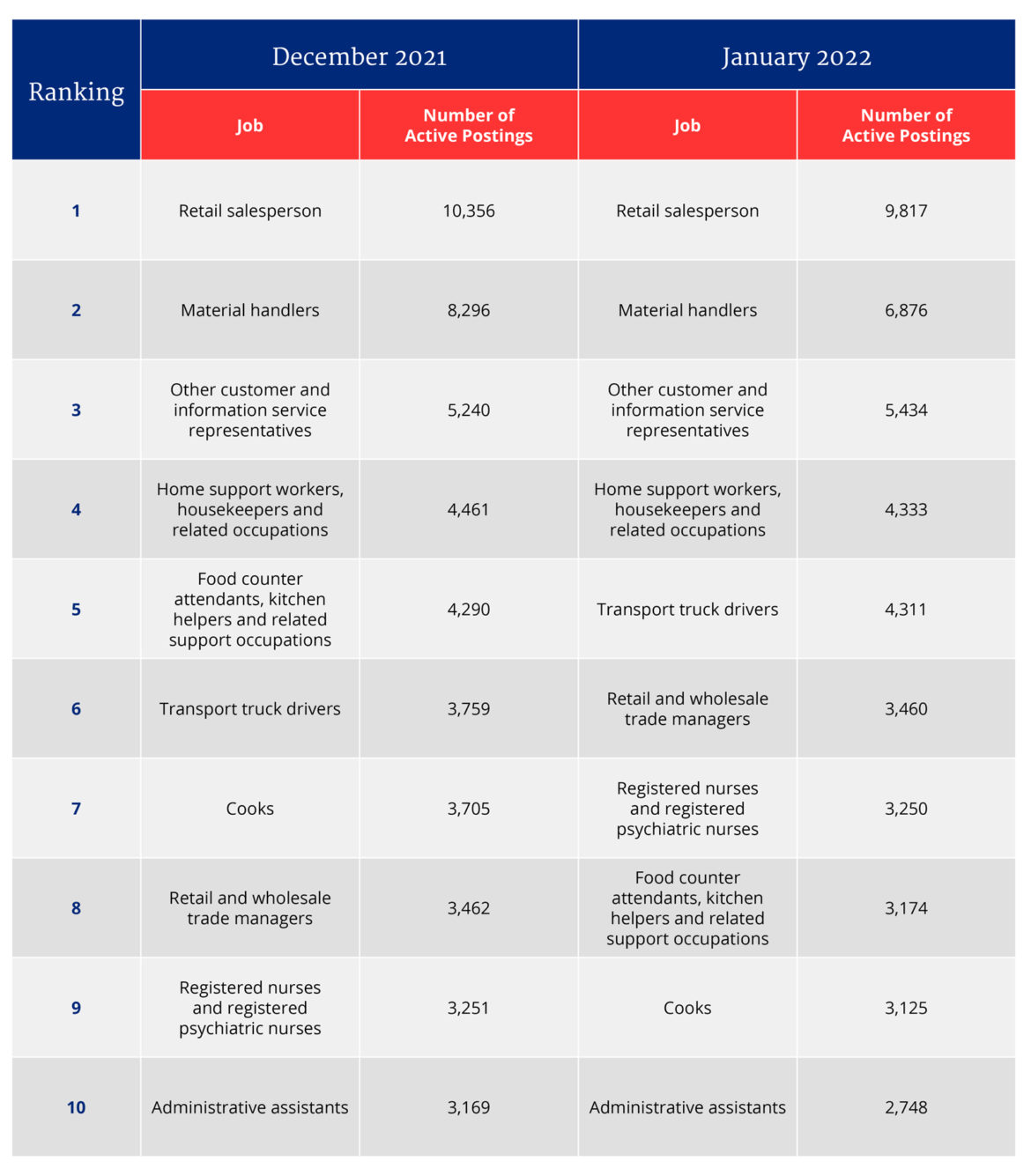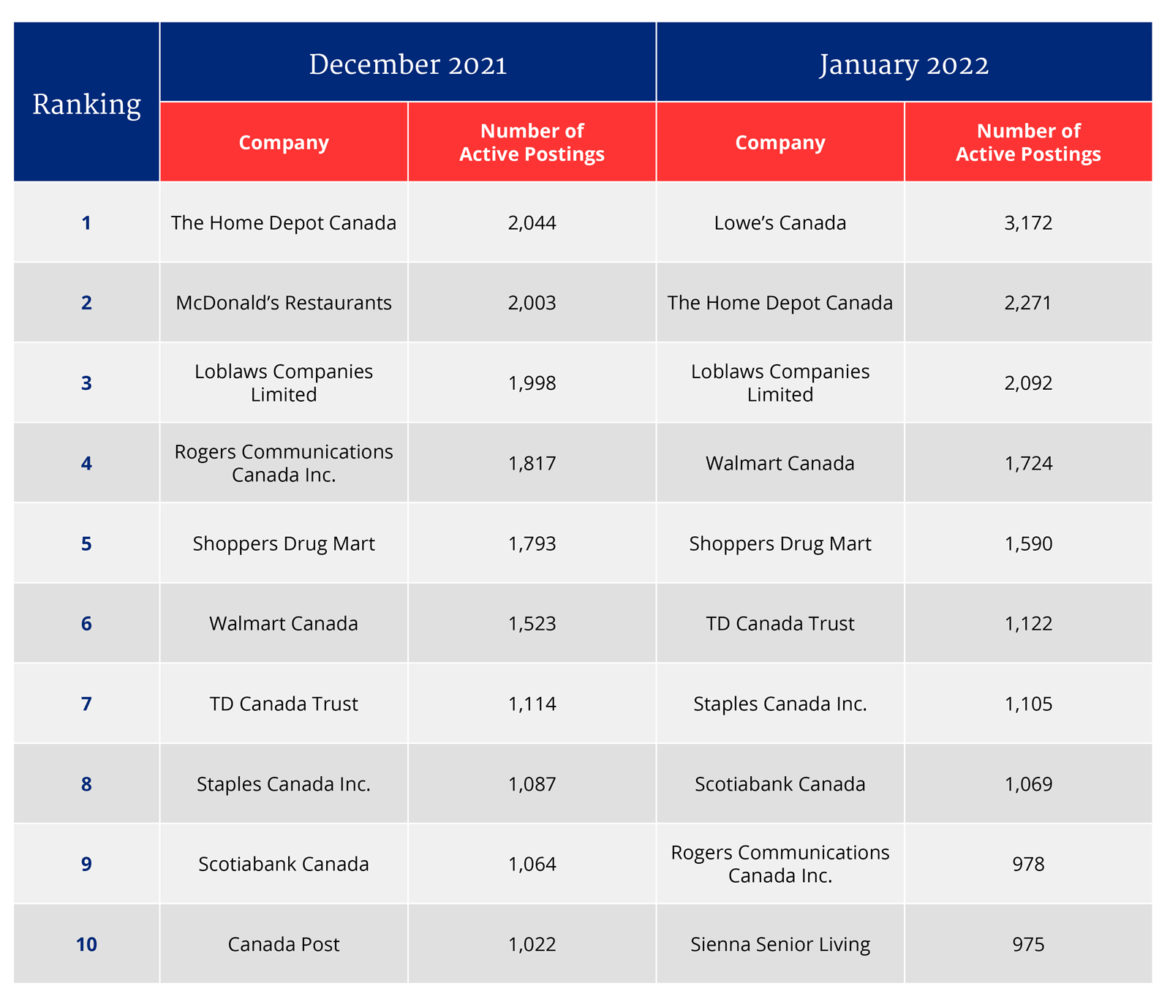It’s no surprise that COVID-19 continues to have an ongoing influence on employment trends in Ontario. Throughout the past 22 months, employment has ebbed and flowed as all sectors have been impacted by the public health measures put into place by the province.
As readers may know, between January 5 and January 31, Ontario moved backwards to Step Two of its Roadmap to Reopen plan. This involved the reimposition of public health measures including reduced social gatherings, encouraged remote work, closed indoor dining and gyms, and reduced capacity to 50 percent for retail and various other businesses. It also resulted in students were learning virtually until January 17.
As we will see from the following data, courtesy of Workforce WindsorEssex’s unique data source which covers job postings from across the province (excluding the City of Toronto and the far north-eastern region), these restrictions certainly impacted some sectors more than others. The employment data bears out these differentiated impacts.
The 10 most in-demand occupations in January 2022 compared to the previous month were as follows:

Over the month of January, the top-10 in-demand occupations constituted over one-quarter of all job postings (46,528 job postings or 28.8 percent) in the covered regions. The number of active job postings decreased by 1,321 in January 2022 relative to December 2021 from total postings of 162,852 to 161,531. This represents a month-over-month decrease of 0.8 percent in terms of active job postings.
Looking at Statistics Canada’s labour numbers for the whole of Ontario, the province lost about 50,000 jobs – from 7,601,700 in December 2021 to 7,551,000 in January – which represented a 0.7 percent reduction in total employment. Yet these employment levels are still up 5.5 percent compared to January 2021 and 1.5 percent compared to January 2020.
Two occupation groups – (1) Food Counter Attendants, Kitchen Helpers and Related Support Occupations and (2) Cooks fell in demand for the third straight month (down 26 percent and 15.7 percent, respectively, in January relative to December). This is to be somewhat expected. The public health measures in place in January were challenging for restaurants and bars, which were closed to indoor dining and had to rely on delivery and takeout options as demand for outdoor dining dipped due to cold temperatures.
In fact, according to Statistics Canada, employment in Accommodation and Food Services decreased 7.2 percent province-wide in January as compared to December with 361,700 employed in the sector in January and 389,900 in December. This is up 11.3 percent from 324,900 compared to January 2021, but still more than 19 percent below employment levels in January 2020.
Job postings for Other Customer and Information Service Representatives were up 3.7 percent in January as compared to December. Other Customer and Information Service Representatives includes customer and information services representatives who answer enquiries and provide information regarding an establishment’s goods, services, and policies and who provide customer services such as receiving payments and processing requests for services. They are employed by retail establishments, contact centres, insurance, telecommunications, and utility companies and other organizations throughout the private and public sectors. As this work is typically performed in an office environment, it is likely that the majority working in this occupation were engaged in remote work during the month of January.
Those employed in Transportation and Warehousing in Ontario increased 0.5 percent province-wide with 386,000 employed in January compared to 384,200 in December, according to Statistics Canada. This is also up 10.2 percent from 350,200 in January 2021, but still below pre-pandemic levels of 396,700 (or 2.7 percent) in January 2020.
This sector includes organizations involved in transporting passengers and goods, warehousing and storing goods, and providing services to these establishments. The modes of transportation are road (such as trucking, transit, and ground passenger), rail, water, air, and pipeline. Important to note is that the Transportation and Warehousing sector also includes national post offices and courier establishments and in fact Canada Post was 11th on list of top-10 companies hiring in January with 862 active job postings. We also saw employers increase the number of job postings for Transport Truck Drivers in January by 14.7 percent over December.
The top-10 companies hiring in January 2022 compared to the previous month were as follows:

We can also see the impacts of the public health measures here. McDonald’s Restaurants, which ranked second on the list in December, did not make the top-10 in large part because it typically hires (1) Food Counter Assistants, Kitchen Helpers and Related Support Occupations and (2) Cooks—both of which saw declines in job postings.
We do see places like Lowe’s Canada, The Home Depot Canada, Walmart Canada, and others that would hire Retail Salespersons prominent on the list. Other companies, like TD Canada Trust, Scotiabank Canada, and Rogers Communications Canada Inc. would account for the increase in postings of Other Customer and Information Service Representatives.
With the restrictions in place throughout January now somewhat relaxed and further restrictions slated to ease on February 21, we may see increased numbers for job postings next months as businesses across the province grapple with the changing employment landscape.
For more information about Workforce WindsorEssex and their valuable LMI, please visit workforcewindsoressex.com.




